UpgradeLive Feed
Upgrade breaking news and instant alerts. Crypto Feed's minimalist interface delivers verified headlines, price movements, and protocol updates the moment they happen. Fast, focused, no fluff.
- LIVE
 Cardano (ADA) Faces Pressure as Whales Sell 100M Tokens
Cardano (ADA) Faces Pressure as Whales Sell 100M TokensCardano (ADA) experiences renewed pressure as whale sell-offs trigger a decline in price, with trading volumes also cooling. Analysts hope for recovery through ETF approvals and network upgrades. (Read More)
 Ethereum Price Slips below $4,000 as Institutions Continue Accumulating Despite Market Pullback
Ethereum Price Slips below $4,000 as Institutions Continue Accumulating Despite Market PullbackEthereum (ETH) has fallen below the critical $4,000 level amid renewed market uncertainty following comments from Federal Reserve Chair Jerome Powell. Powell’s indication that the latest 25-basis-point rate cut may be the last of 2025 has fueled caution across both traditional and crypto markets. As a result, the Ethereum price is at slightly above $3,900, marking a 2.2% daily decline, with Bitcoin and other major altcoins also in the red. The broader pullback saw Ethereum ETFs record $81.44 million in outflows, led by Fidelity’s FETH at $69.49 million. Only BlackRock’s ETHA fund showed resilience, posting $21.36 million in inflows. This shift follows two consecutive days of positive ETF activity, indicating profit-taking and reduced risk appetite among traders. Institutional Demand Grows Even as the Ethereum Price Weakens While the Ethereum price slipped, institutional accumulation has intensified. Data shows that institutions now hold 4.1% of Ethereum’s total supply, surpassing Bitcoin’s 3.6% for the first time. Analysts attribute this shift to the GENIUS Act, which provides a clear framework for stablecoin and on-chain finance regulation. This policy clarity has boosted institutional trust in Ethereum as the backbone of DeFi and tokenized RWAs. Despite the current weakness, many funds continue to add exposure, anticipating Ethereum’s Web3 Dominance. Technically, the Ethereum price shows mixed signals. RSI sits at 44, and the MACD line remains below the signal line, both pointing to fading bullish momentum. Analysts caution that if ETH fails to reclaim $4,000, it could revisit support zones around $3,850–$3,750. A decisive close above $4,100, however, may renew bullish sentiment toward $4,400–$4,500. On-Chain Activity Reaches Record Highs Amid Low Fees Interestingly, Ethereum’s network fundamentals remain robust even as price momentum cools. On-chain activity has surged to record highs, with daily transactions and unique active addresses breaking all-time records. Similarly, gas fees remain near historic lows, signaling improved scalability driven by Layer-2 networks such as Arbitrum, Optimism, and Base. This efficiency milestone showcases Ethereum’s technological evolution, from its proof-of-stake transition to the upcoming EIP-4844 (proto-danksharding) upgrade. Analysts believe this combination of strong institutional demand and record network usage, despite short-term price pressure, positions the Ethereum price for a sustained recovery once macroeconomic headwinds ease. Cover image from ChatGPT, ETHUSD chart from Tradingview
 XRP Ledger Just Got More Private With This Latest Upgrade From Ripple
XRP Ledger Just Got More Private With This Latest Upgrade From RippleA new upgrade to the Ripple network is giving the XRP Ledger a significant boost in privacy. The company’s developers have added new privacy tools that keep user and payment details hidden during transaction confirmation. The update represents a massive leap for XRP Ledger privacy, allowing users to send and confirm transactions without exposing personal information. Ripple Developers Add Zero-Knowledge Proofs To The XRP Ledger According to a new post on X by xrpl.to (@xrplto), Ripple developers have made a significant leap forward for the network’s privacy features, integrating Zero-Knowledge Proofs (ZKPs) into the XRP Ledger. The feature lets users verify transactions on the XRP ledger without revealing any details, such as who sends the funds, who receives them, or how much money moves between them. The research report attached to the post details how Ripple’s developers have built a system called ZKProver to manage the Zero-Knowledge Proof privacy layer on the XRP Ledger. ZKProver manages every step of the private transaction process, from building secure digital circuits to verifying deposits and withdrawals, all while keeping sensitive data hidden. The privacy engine also handles the cryptographic keys that protect each network operation and guarantees transaction integrity. The report also notes that the new privacy engine on the XRP ledger generates and verifies proofs to confirm transaction validity without introducing tampering risks. It converts data into secure formats and produces random values that make every transaction unique. This randomness adds another layer of protection, making it nearly impossible to link or trace activities on the XRP ledger. By automating these advanced cryptographic steps, the network can now support shielded transactions without sacrificing speed or efficiency. New Privacy Features And Transaction Types Introduced The integration of Zero-Knowledge Proofs strengthens the XRP Ledger’s privacy by adding shielded transactions that hide key details from public view, making XRP transfers harder to trace. The upgrade also introduces three new private transaction types for shielded transactions, each extending the transactor base class. ZkDeposit lets users deposit tokens into a private pool that hides the details from view, while ZkWithdraw allows users to withdraw tokens from that pool while keeping the transaction private. Last but not least, ZkPayment lets users send XRP privately between wallets without revealing amounts or addresses to the public. These transaction types draw inspiration from Zcash, a well-known cryptocurrency famous for its focus on confidential transactions. Ripple’s approach shows how the company is inspired by proven privacy concepts and adapting them to strengthen the XRP Ledger. The latest update further underscores the XRP Ledger’s growth into a more improved, private, and user-focused network. As privacy remains a key topic in crypto, the Zero Knowledge Proofs privacy upgrade helps the XRP Ledger stand out as a more secure, enterprise-grade blockchain network.
 State Of The XRP Ledger Report Gives Deep Insight Into How Institutions Are Moving In
State Of The XRP Ledger Report Gives Deep Insight Into How Institutions Are Moving InThis week, crypto market intelligence platform Messari released its Q3 State of XRP Ledger (XRPL) report, revealing a maturing network that continues to draw institutional attention. The data points to stronger engagement, increased transaction volumes, and a growing number of new addresses, signaling that the Ledger is evolving from a retail-heavy blockchain into one increasingly driven by enterprise-adoption and Real-World Asset (RWA) tokenization. Institutional Activity Reflected In XRP Ledger Network Growth Messari’s report highlights clear signs of institutional movement within the XRPL network during Q3 2025. Average daily transactions rose 8.9% Quarter-Over-Quarter (QoQ), from $1.6 million to $1.8 million. Likewise, the average daily active sender addresses increased by 15.4% from 21,900 to 23,300, while total new addresses rose by 46.3% to 447,200. Overall, the Ledger closed the quarter with 6.9 million total addresses, up 6.1% from the previous quarter, according to Messari’s metric chart. Notably, for the fifth consecutive quarter, Messari notes that the number of active receiver addresses on the Ledger continued to surpass the number of active sender addresses. In Q3 2025, average daily receivers declined 30.01% QoQ, falling from 72,000 to 50,300, while average daily senders rose 15.4% from 21,900 to 25,300. Despite the drop in receiver activity, data shows that total network throughput strengthened, with average daily transactions climbing 8.9% QoQ to $1.8 million. This reflects a more concentrated and higher-value transaction flow, typically linked to custodians and CEXs, which use destination tags to manage deposits for institutions and large groups of users. Messari also reported that “Payment” transactions on XRPL remained dominant, representing 55.7% of total network activity, while “OfferCreate” transactions, which submit orders to exchanges, increased to 33.2%. This marks the seventh consecutive quarter that Payments have led transaction types. Data shows that payment volume rose 1% QoQ to 986,600 after a previous decline, while OfferCreate activity showed growing liquidity operations among institutional market makers. OracleSet, used to create or update on-chain price oracles, also rose to 0.7% of all transactions, underscoring the Ledger’s growing integration with asset pricing and financial data feeds since their activation in late 2024. Infrastructure Upgrades And ETFs Signal XRPL Institutional Adoption The second half of Messari’s report highlights structural developments in the XRPL ecosystem aimed at facilitating institutional adoption. Data reveals that the Ledger introduces Multi-Purpose Tokens (MPTs) that embed metadata for RWA parameters. It also implemented confidential MPTs secured by Zero-Knowledge Proofs (ZKPs) and advanced credential systems supporting KYC and AML compliance. Together, these upgrades address the network’s identity, financial, compliance, and privacy requirements, laying the foundation for widespread institutional adoption. Messari further reported that Institutional sentiment is further supported by the pending approval of seven US Spot XRP ETF applications. Notably, the US Securities and Exchange Commission (SEC) is expected to issue its decision between October 18 and November 14. Polymarket currently assigns a 99% probability that a US XRP ETF will be approved in 2025.
 'It's a Really Big Deal': Ethereum Developers Set Final Date for Fusaka Upgrade
'It's a Really Big Deal': Ethereum Developers Set Final Date for Fusaka UpgradeFusaka, which will introduce a new, efficient data-sampling method for transactions called PeerDAS, will go live in early December.
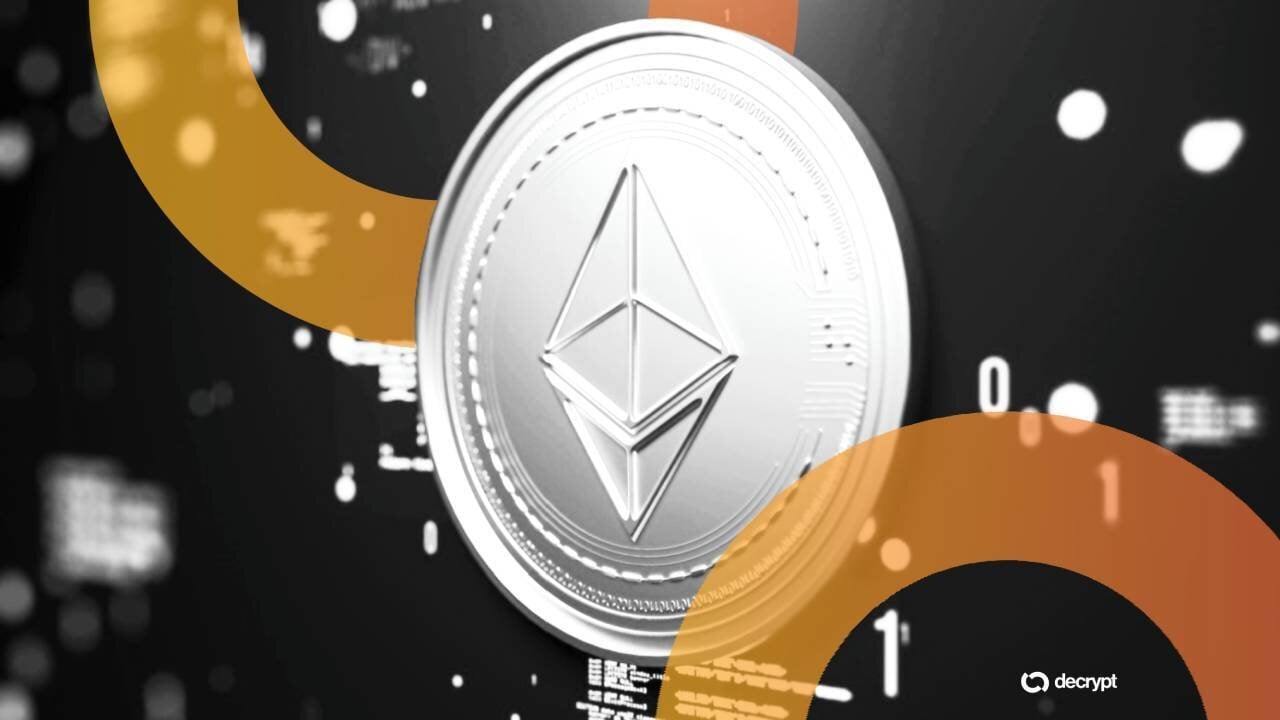 'It's a Really Big Deal': Ethereum Developers Set Final Date for Fusaka Upgrade
'It's a Really Big Deal': Ethereum Developers Set Final Date for Fusaka UpgradeFusaka, which will introduce a new, efficient data-sampling method for transactions called PeerDAS, will go live in early December.
 Ethereum Developers Lock In Fusaka Upgrade for Dec. 3 With PeerDAS Rollout
Ethereum Developers Lock In Fusaka Upgrade for Dec. 3 With PeerDAS RolloutThe move kicks off the countdown to Ethereum’s second hard fork of 2025.
 NEAR Cuts Inflation Rate by Half Despite Failed Community Vote
NEAR Cuts Inflation Rate by Half Despite Failed Community VoteNearly 60 million fewer NEAR tokens will be minted this year if a validator supermajority adopts the upgrade, while an earlier community vote failed to pass.
 NEAR Cuts Inflation Rate by Half Despite Failed Community Vote
NEAR Cuts Inflation Rate by Half Despite Failed Community VoteNEAR Protocol has upgraded its network with a new update that reduces its annual token inflation rate from 5% to roughly 2.4%, even though the community vote intended to authorize the change failed to reach the required threshold.The NEAR Protocol team announced today, Oct. 30, that it had completed the upgrade. The so-called halving upgrade curbs token dilution caused by nearly 60 million new NEAR tokens minted annually due to minimal fee burns, while also realigning incentives for on-chain participation and lowering staking yields from roughly 9% to 4.5%, assuming half of the total supply remains staked.To continue reading this as well as other DeFi and Web3 news, visit us at thedefiant.io
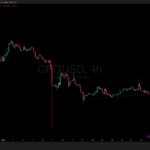 Cronos Smarturn Upgrade Explained: Is CRO Price Set to Skyrocket?
Cronos Smarturn Upgrade Explained: Is CRO Price Set to Skyrocket?The much-anticipated Cronos Smarturn upgrade went live today, but the excitement was overshadowed by broader market volatility as the CRO price took a deep dive. Following the U.S. Federal Reserve’s 0.25bps rate cut on October 29, the crypto market turned red, with Bitcoin sliding below $110,000 and total market cap dipping about -2%. Historically, markets often correct after FOMC meetings before resuming their trend — and this time was no exception. Still, the broader outlook remains positive, with BTC holding above $105,000. $BTC liquidates and flush longs before the uptrend. Is this time different? pic.twitter.com/JV3TB0PXns — Crypto Seth (@seth_fin) October 30, 2025 That being said, Cronos was not spared. CRO price slipped 4.45% in the past 24 hours, closely tracking Bitcoin’s -3.6% and Ethereum’s -5%. Despite optimism surrounding the upcoming Smarturn upgrade, short-term pressure remains, with CRO trading near $0.143, down over 22% in the past month. With a key network milestone arriving amid macroeconomic uncertainty, traders now wonder: Can the Smarturn upgrade revive CRO’s rally, or will the bears stay in control? EXPLORE: 10+ Next Crypto to 100X In 2025 Macro Pressure: FED Rate Cut Triggers Crypto Selloff – Cronos Faces Resistance Amid Bearish Setup The FED’s 0.25bps rate cut initially triggered a wave of selling across crypto markets, and CRO price followed suit. On the 4-hour chart, the token is testing a key ascending support line near $0.142–$0.145, a level that has held since mid-October. (Source: Coingecko) If buyers fail to defend this area, the next stop could be $0.13, mirroring the September lows. The Relative Strength Index (RSI) hovers near 40, signaling fading momentum, while the MACD shows only mild bullish divergence — suggesting sellers still have the upper hand. DISCOVER: 16+ New and Upcoming Binance Listings in 2025 On the daily timeframe, CRO trades within a broad consolidation range between $0.118 support and $0.165 resistance. A decisive close above $0.165 would mark a short-term reversal, while slipping below $0.142 could confirm a deeper correction toward the $0.12 zone. EXPLORE: What is WET Token? Solana’s HumidiFi DEX to ICO in November – Next 100X Crypto? Technical Milestone for the Cronos Network – AI Expansion and ETF Potential Despite the bearish technicals, Cronos is taking a major step forward with today’s Smarturn mainnet upgrade, scheduled for block height 38,432,212 (around 7 A.M. GMT). The event introduces upgrades across the Ethereum Virtual Machine (EVM), IBC interoperability, smart accounts, and new opcodes, all aimed at improving scalability and developer performance. Users may experience a brief network downtime of up to one hour as validators finalize the transition. Once completed, Cronos aims for 30,000 transactions per second with 0.5-second block times, supporting faster DeFi and AI-driven applications. Beyond Smarturn, Cronos is also expanding its AI Agent SDK, allowing developers to create semi-autonomous on-chain agents for trading, cross-chain communication, and liquidity management — reinforcing Cronos’ ambition to become a hub for AI-powered blockchain ecosystems. Another potential long-term catalyst is ETF exposure. The Trump Media Crypto Blue Chip ETF is expected to allocate 5% to CRO, while Canary Capital’s staked CRO ETF awaits SEC review. Either approval could inject billions in institutional inflows, significantly boosting the CRO price and liquidity across the Cronos ecosystem. Do you believe $CRO will go past $1? There’s too much utility behind it.#CRO will be one of the biggest Blockchains in the world pic.twitter.com/9xjgEZ0MzL — Colin Chasmar Ⓥ (@CronosChaz) October 27, 2025 CRO Price Outlook: Consolidation Before Recovery? In the near term, CRO price remains at a critical support zone around $0.143. A rebound from this level could lift the token toward $0.16–$0.165, while a clean break above this resistance would confirm a potential move toward $0.21. Conversely, losing support could open the door for another test near $0.12. Despite the volatility, Cronos’ fundamentals remain strong. The network holds over $535 million in total value locked (TVL) and continues to expand its DeFi and AI integrations with partners like AWS and Google Cloud. If the Smarturn upgrade delivers improved performance and the broader market stabilizes, CRO price could see renewed momentum into late Q4 2025. EXPLORE: 9+ Best High-Risk, High-Reward Crypto to Buy in 2025 The post Cronos Smarturn Upgrade Explained: Is CRO Price Set to Skyrocket? appeared first on 99Bitcoins.
 Hyperliquid: "Klarste Chance auf dem gesamten Finanzmarkt"
Hyperliquid: "Klarste Chance auf dem gesamten Finanzmarkt"Mit dem HIP-3-Upgrade können nun auch allerlei Wertpapiere auf der Krypto-Exchange gehandelt werden. Doch dies soll erst der Anfang sein. Source: BTC-ECHO BTC-ECHO
 Internet Computer Price Prediction: Crypto Expert Outlines How the ICP Price Could 100X Before 2030 – Is This Quiet Veteran About to Explode?
Internet Computer Price Prediction: Crypto Expert Outlines How the ICP Price Could 100X Before 2030 – Is This Quiet Veteran About to Explode?A dormant giant called ICP could be about to explode according to one crypto analyst. In his view, this token holds significant value and is being overlooked by the community. Here’s why he thinks there’s a case to make for a bullish Internet Computer price prediction.In a lengthy X post, user SWI Int. Caff/acc highlighted the project’s strengths. He claims that, in just 4 years, Internet Computer has become the #1 blockchain in terms of transaction volumes, surpassing titans like Solana and Ethereum. $ICP will outperform the entire crypto market by 100× before 2030.And the data already points in that direction.No hype.No artificial volume.Just pure on-chain activity. Today, ICP is already the #1 blockchain by total transactions — ahead of Solana, Hedera, Stellar,… pic.twitter.com/Ub29VTECD6— SWI Int. Caff/acc (@X2worldtech) October 28, 2025 This analyst emphasizes that Internet Computer has not relied on trends and fads like meme coins or DeFi. Instead, its growth is fueled by increased usage by real applications that rely on this blockchain to run.He sees ICP dominating the crypto market by 2030 and outperforming the entire market by 100X by that year.ICP took a big hit during the October 10 crash, as its price dived from $4.4 to $2.8. Thus far, it has failed to recover from those lows. Internet Computer Price Prediction: 5X Gains Ahead as ICP Hits Key SupportConsistent with this analyst’s views, ICP could be about to make a stronger comeback as long as the $3 support area holds. This has been a key level from which the token has bounced strongly one time already in October 2023.Back then, ICP rose from $3 to $21 in just 6 months. Market conditions are favorable for such a move as the Federal Reserve cut interest rates by 25 basis points yesterday.If ICP manages to stay above $3, we could witness the beginning of a strong recovery, targeting the $16 mark first for a 5X return. This move could be followed by a much stronger push if the token breaks through this ceiling in the next few months.Similarly, the top crypto presales of this cycle like Pepenode ($PEPENODE), could deliver surprisingly high games. This project is preparing to launch the first mine-to-earn (M2E) game for meme coins and has already raised $2 million to do it.Pepenode ($PEPENODE) Makes Crypto Mining Easy, Fun, and Hardware-FreeMining meme coins is now possible without the need for expensive hardware investments with Pepenode ($PEPENODE). This M2E game allows players to launch virtual mining rigs and upgrade their setup to increase output.As they climb the leaderboard, users could get surprising airdrops of the valuable tokens like Fartcoin ($FARTCOIN) and Bonk ($BONK).The project also introduces a deflationary twist that will make $PEPENODE more valuable over time, as 70% of the tokens spent on upgrades will be burned forever.As the game gains popularity, the price of its utility token should rise, making $PEPENODE a crypto with the potential to 10X or even 100X during this cycle.To buy $PEPENODE before the next price increase, simply head to the official Pepenode website and connect a compatible wallet like Best Wallet.You can either swap USDT or ETH for this token or use a bank card to invest.The post Internet Computer Price Prediction: Crypto Expert Outlines How the ICP Price Could 100X Before 2030 – Is This Quiet Veteran About to Explode? appeared first on Cryptonews.
 Claude Code Enhancements Boost Autonomy with New Features
Claude Code Enhancements Boost Autonomy with New FeaturesAnthropic introduces significant upgrades to Claude Code, enhancing autonomy with a native VS Code extension, terminal updates, and checkpoints for complex task management. (Read More)
 Hetu 3.0 – Deep Intelligence Money – Turning Verified Intelligence Into Liquid Capital
Hetu 3.0 – Deep Intelligence Money – Turning Verified Intelligence Into Liquid Capital[PRESS RELEASE – San Francisco, United States, October 30th, 2025] Hetu, a pioneer in decentralized science (DeSci) and financial infrastructure, today unveiled Hetu 3.0, an Ethereum-based AI-Native Monetary Stack that transforms verified intelligence into programmable capital — turning verified intelligence into liquid capital, bridging crypto liquidity with the AI economy, and introducing the first sovereign, society-owned AI currency. Ethereum-Based AI-Native Money Stack Built directly on Ethereum, Hetu 3.0 introduces a tri-layered architecture that converts verified intelligence into liquid, composable capital. At its foundation lies $HETU, a fair-launched, deflationary 21 million-supply base asset anchoring liquidity and credit across the intelligence network — the Bitcoin of autonomous cognition. Flowing through it is $AIUSD, a zero-fee, millisecond-settlement stablecoin backed by AI infrastructure revenue and yielding 8–12% for human and agent-level payments. Circulating between them is $FLUX, a real-time audit and reward layer powered by Proof of Causal Work (PoCW), encoding proof, credit, and reputation into a unified on-chain cashflow financing standard. Together, these currencies form a closed, auditable loop: verified work becomes $FLUX credit, settles through $AIUSD, and consolidates into $HETU’s long-term value base — the financial spine of the intelligence economy. Society-Owned AI Bitcoin — Toward a Sovereign Intelligence Currency Hetu 3.0 redefines sovereign AI money — not as a currency of states or corporations, but as one belonging to the collective network of intelligence itself. By tying issuance to verified causal work rather than artificial scarcity, Hetu makes value a direct expression of verified understanding. In this system, intelligence becomes monetary, capable of verifying, financing, and sustaining itself. Value arises not from possession, but from comprehension — from that which is understood, aligned, and shared. Sovereignty thus emerges from epistemic truth, not political authority — forming a monetary order grounded in verification and trustless knowledge. Bridging Crypto Liquidity to AI — via X402 and EIP-8004 Hetu builds the missing bridge between Ethereum’s capital base and AI-native yield. EIP-8004 introduces verifiable agent identity and agent-to-agent settlement, allowing each autonomous actor to record proof, performance, and reputation directly on-chain. X402 extends this framework by channeling ETH and stablecoin liquidity into productive AI yield — where $AIUSD powers real-time payments and $FLUX tokenizes future revenue. Together, the two standards form an on-chain cashflow financing loop, connecting Ethereum liquidity to verified AI productivity — turning capital markets into the circulatory system of the intelligence economy. From Scarcity to Abundance — Redefining the Meaning of Money The industrial economy was built on scarcity — finite supply, accumulation, and zero-sum exchange. The intelligence economy begins from abundance, where value derives from verified cognition and understanding rather than ownership or extraction. Proof of Causal Work (PoCW) rewards traceable reasoning and verifiable contribution, while Proof of Semantic Alignment (PoSA) ensures intent and output remain coherent and meaningful. Together, they transform money into a semantic feedback loop between truth, trust, and intelligence — where liquidity flows toward meaning, not speculation. In this new order of abundance, understanding becomes yield, and alignment becomes capital. A New Monetary Order Hetu 3.0 is more than a protocol upgrade — it marks the emergence of a new monetary order. Here, money is issued by verified intelligence rather than by power; liquidity gravitates toward meaning rather than scarcity; and every aligned cognitive act becomes a unit of capital. By combining an EVM-compatible causal-DAG with Proof of Causal Work, Hetu bridges Ethereum liquidity with the AI economy, enabling autonomous agents to verify outputs, transact instantly, and finance future work. In this paradigm, money ceases to be a static medium of exchange — it becomes a living language of intelligence: a self-verifying, self-financing, and self-evolving foundation for the civilization to come. “By combining an EVM-compatible causal DAG with Proof of Causal Work, Hetu 3.0 bridges Ethereum liquidity with the AI economy — enabling autonomous agents to verify output, transact instantly, and finance future work.” — Jialin Li, Co-Founder, Hetu Protocol About Hetu Hetu builds Deep Intelligence Money — the first AI-Native Monetary Stack unifying verification, settlement, and financing for the intelligence economy. Powered by PoCW and PoSA, and anchored on EIP-8004 and X402, Hetu 3.0 runs on an EVM-compatible causal-DAG ledger capable of 210K TPS, 400 ms finality, and 1 ms real-time audits across more than 1,000 AI markets. By uniting Ethereum’s liquidity with verified intelligence, Hetu lays the foundation for a self-verifying, self-financing, and self-evolving civilization of money. Website: hetu.org X (Twitter): @hetu_protocol Lightpaper: docsend.com/view/x9p3pf9vkseknvt9 The post Hetu 3.0 – Deep Intelligence Money – Turning Verified Intelligence Into Liquid Capital appeared first on CryptoPotato.
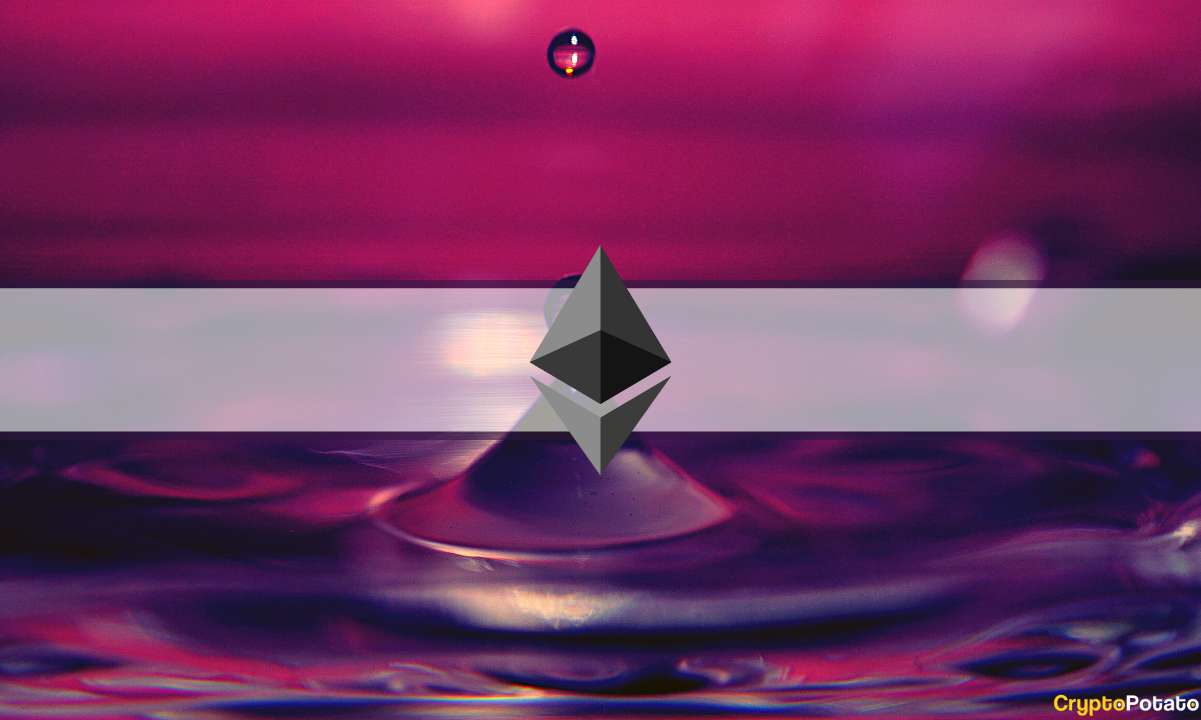 Ethereum’s Fusaka Upgrade Hits Final Testnet – Mainnet Launch Locked for December 3
Ethereum’s Fusaka Upgrade Hits Final Testnet – Mainnet Launch Locked for December 3Ethereum’s much-anticipated Fusaka hard fork reached a major milestone on Tuesday with a successful deployment on the Hoodi testnet – its final testing phase before mainnet activation later this year. The test, which went live around 18:53 UTC, was the completion of Ethereum’s three-stage simulation process following earlier activations on the Holesky and Sepolia testnets. Fusaka Upgrade According to the Ethereum Foundation, Fusaka’s mainnet rollout is expected at least 30 days after Hoodi’s activation, while developers tentatively target December 3. The main objective behind the upgrade is to strengthen Ethereum’s scalability, security, and cost efficiency, building on the groundwork laid by April’s Pectra upgrade. Fusaka introduces a series of technical improvements spanning more than a dozen Ethereum Improvement Proposals (EIPs). Leading the list is the EIP-7594, or Peer Data Availability Sampling (PeerDAS), which enables validators to verify only portions of data, rather than entire “blobs,” and significantly reduces bandwidth demands and operational costs for validators and Layer 2 networks. Other proposals, such as EIPs 7825 and 7935, will adjust gas limits to improve efficiency and prepare the network for parallel execution, while EIPs 7939 and 7951 boost performance and zero-knowledge proving support. These upgrades are designed to lower transaction costs for users and developers while setting the stage for the next phase of rollup scaling. Ethereum client teams confirmed smooth progress following Hoodi’s activation. Nethermind stated “The Ethereum 𝗛𝗼𝗼𝗱𝗶 𝗙𝗼𝗿𝗸 has been successfully completed and is now running seamlessly on the 𝗡𝗲𝘁𝗵𝗲𝗿𝗺𝗶𝗻𝗱 𝗖𝗹𝗶𝗲𝗻𝘁. Another smooth upgrade, another key milestone on the road to Fusaka. Big thanks to everyone in the ecosystem who helped make it happen – from client teams to researchers and operators.” Road Ahead Consensys also said that Fusaka “paves the way for parallel execution” and lays the foundation for future network advancements. The rollout will proceed in phases. Following the mainnet launch scheduled for December 3, blob capacity increase is expected to be on December 17, while a second hard fork to expand blob capacity further is slated for January 7, 2026. Ethereum developers have already turned their focus to the next upgrade, dubbed “Glamsterdam,” which is expected to introduce faster block times and further scalability enhancements. Glamsterdam falls under the “Surge” stage of the network’s roadmap. Meanwhile, ETH’s price remained fairly unfazed by the technical development. The altcoin recorded a fresh decline of almost 3% over the past 24 hours and is currently trading below $4,000. The post Ethereum’s Fusaka Upgrade Hits Final Testnet – Mainnet Launch Locked for December 3 appeared first on CryptoPotato.
 FED Decision Today! Monad 3 Day Airdrop! Western Union Stablecoin on SOL!
FED Decision Today! Monad 3 Day Airdrop! Western Union Stablecoin on SOL!BTC: 112.9k (-1%) | BTC.D: 60% (+0.3%). ETH: 4000 (-3%) | BNB: 1116 (-1%) | SOL: 194 (-4%). Top Gainers: PI, TRUMP, M, PAXG, ZEC. BTC ETFs: +$202m | ETH ETFs: +$246m. Crypto falls ahead of Fed decision, stocks strong. France considers accumulating 2% of BTC supply. Huge volumes on day 1 of SOL ETF. ICO participant moves $6m ETH after 8 years. Hype and BNB dominate weekly L1 fees. Sharplink to stake $200m ETH on Linea. ETH Fusaka upgrade now on final testnet. Evernorth has accumulated $1b XRP. Western Union stablecoin planned on SOL. Securitize to go public via $1.25b SPAC deal. Circle starts testing Arc Blockchain. Visa adds support for four stablecoins.
 Cardano's Biggest Upgrade in Years Hits Major Milestone
Cardano's Biggest Upgrade in Years Hits Major MilestoneCardano Leios, a radical Ouroboros consensus upgrade, comes one step closer with this announcement from Input Output.
 Tokenized Nasdaq Futures Enter Top 10 by Volume on Hyperliquid
Tokenized Nasdaq Futures Enter Top 10 by Volume on HyperliquidHyperliquid’s HIP-3 upgrade, which enables permissionless perpetuals markets, launched two weeks ago, and TradeXYZ’s XYZ100 market is gaining traction as it breaks into the exchange’s top 10 assets by daily volume while competitors debate its efficiency.TradeXYZ is the perpetuals arm of Unit, the Hyperliquid tokenization layer. The protocol's XYZ100 market was the first HIP-3 deployment, tracking Nasdaq futures, one of traditional finance’s largest equity indices.Following a short sign-up and referral campaign, TradeXYZ began gradually rolling out platform access to waitlisted users, and was launched to the public on Hyperliquid’s front end this weekend, resulting in a huge surge of volume and open interest. Over the last 24 hours, XYZ100 has generated $72 million in volume with $55 million in open interest. To continue reading this as well as other DeFi and Web3 news, visit us at thedefiant.io
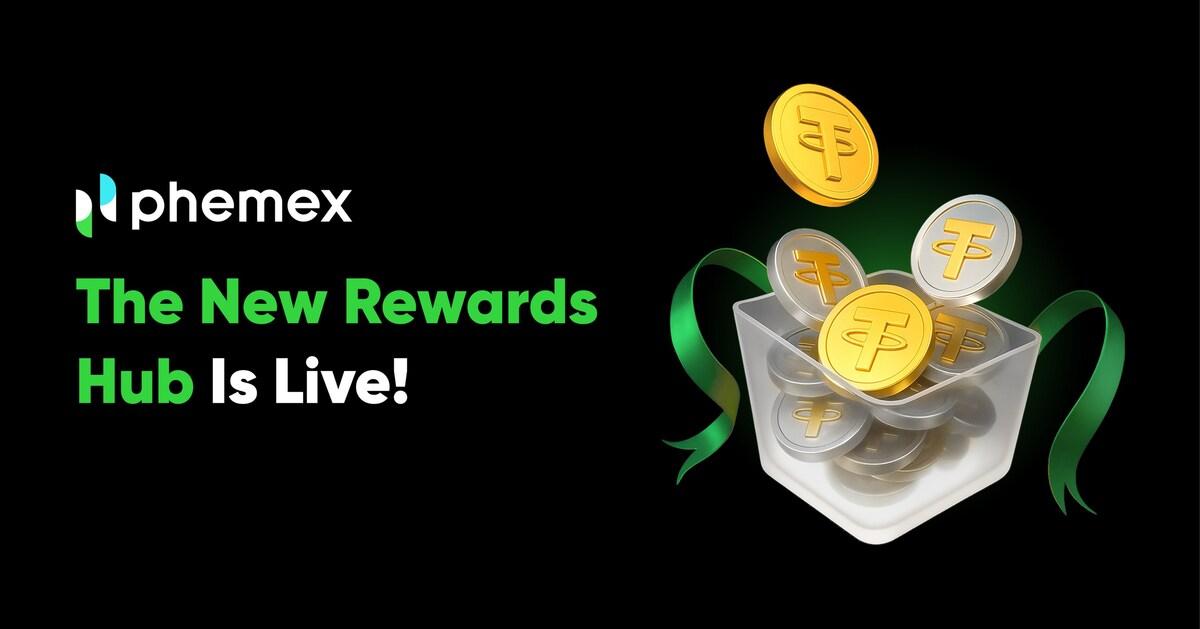 Phemex Upgrades Rewards Hub with $15,000 Package And Mystery Box System
Phemex Upgrades Rewards Hub with $15,000 Package And Mystery Box SystemAPIA, Samoa, Oct. 22, 2025 /PRNewswire/ — Phemex, the most efficient crypto exchange, today launched an upgraded Rewards Hub with up to $15,000 USDT in total rewards, mystery box system, and missions for new and experienced traders. The upgraded Rewards Hub replaces fixed prizes with mystery boxes containing cash, BTC airdrops, trading fee vouchers, and futures bonus coupons. Updated Rewards Hub includes: Newcomer Welcome Gifts — Up to 5,000 USDT for KYC verification, first deposit, and first trade $10,000 Trading Challenge — 5,000 USDT in Futures rewards plus 5,000 USDT in Spot rewards Earn Incentives — 7% interest boost coupons for new users completing staking tasks “We upgraded the Rewards Hub to give users more ways to earn while they trade,” said Federico Variola, CEO of Phemex. “Bigger prizes, surprise rewards, and missions for everyone — from your first deposit to advanced trading. We’re always looking for ways to empower our traders.” About Phemex Founded in 2019, Phemex is a user-first crypto exchange trusted by over 6 million traders worldwide. The platform offers spot and derivatives trading, copy trading, and wealth management products designed to prioritize user experience, transparency, and innovation. With a forward-thinking approach and a commitment to user empowerment, Phemex delivers reliable tools, inclusive access, and evolving opportunities for traders at every level to grow and succeed. For more information, please visit: https://phemex.com/
 Ethereum Foundation Announces Gas Limit Cap for Upcoming Fusaka Upgrade
Ethereum Foundation Announces Gas Limit Cap for Upcoming Fusaka UpgradeThe Ethereum Foundation (EF) has announced a change to the upcoming Fusaka hard fork that will introduce a per-transaction gas limit cap.The EF unveiled the change via its blog today, with the update, also known as EIP-7825, already live on the Holesky and Sepolia testnet networks. EIP-7825 is expected to launch on the Ethereum mainnet when Fusaka goes live in December.Currently, a single transaction can fill an entire block's 45 million gas limit, which could inhibit parallel execution and open the door to Denial of Service (DOS) attacks. The change will set a per-transaction gas limit of 16.78 million to mitigate potential issues.To continue reading this as well as other DeFi and Web3 news, visit us at thedefiant.io
 Launch Coin Falls Over 30% as Developers Abandon Current Token Model
Launch Coin Falls Over 30% as Developers Abandon Current Token ModelThe price of Launch Coin on Believe (LAUNCHCOIN) sank more than 30% on Thursday, Oct. 16, after developers said they were scrapping its original model, calling it too outdated to keep up with the growing demands of the Believe ecosystem.In an X thread yesterday, the Solana-based token launchpad said that the original design of the LAUNCHCOIN token “didn’t anticipate the long-term needs of the Believe ecosystem,” announcing an upgrade to a new token called BELIEVE. Per the announcement, under the upgrade plan, LAUNCHCOIN will eventually be phased out after a two-week swap window, ending Oct. 29, though a final claim period remains open until Nov. 12.To continue reading this as well as other DeFi and Web3 news, visit us at thedefiant.io
 Sorare Migrates to Solana, Abandoning Ethereum L2 StarkEx
Sorare Migrates to Solana, Abandoning Ethereum L2 StarkExSorare, a blockchain-based fantasy sports game where fans can collect NFT player cards, is once again changing its home, this time migrating from StarkEx to Layer 1 chain Solana.In an announcement on Oct. 8, Sorare described the migration from StarkEx, an Ethereum Layer 2 scaling solution, as “more than a technical upgrade,” calling it a “step forward in our vision to become the most open and flexible platform for digital sports collectibles.”In its FAQ section for the migration, Sorare explained that it’s moving to Solana to connect Sorare cards “to a broader ecosystem,” including the ability to manage the NFTs on popular Solana wallets like Phantom. The team also hinted at a possible Sorare ecosystem token in the future, as part of its long-term vision:To continue reading this as well as other DeFi and Web3 news, visit us at thedefiant.io
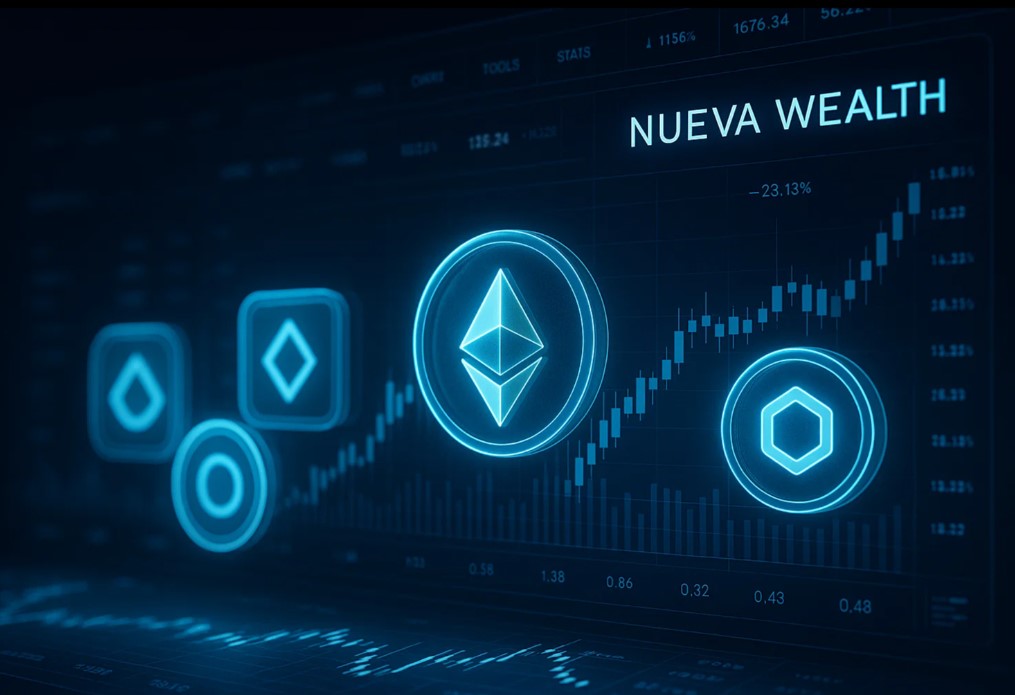 NuevaWealth for Altcoin CFD Trading – Pros, Cons & Tips
NuevaWealth for Altcoin CFD Trading – Pros, Cons & TipsIntroduction to Altcoin Trading Altcoins are any cryptocurrencies besides Bitcoin. Over the past decade the crypto ecosystem has exploded from a handful of coins to thousands, each trying to solve a specific problem—whether it’s enabling smart contracts (Ethereum), providing fast, low‑fee payments (Solana, Litecoin), powering decentralized finance (Uniswap, Aave), supporting NFTs and gaming (Axie Infinity, Decentraland), or offering privacy (Monero, Zcash). Because many of these projects are still early in their development cycles, their market prices tend to be more volatile than Bitcoin. That volatility creates opportunities for traders who can correctly anticipate short‑term price moves, but it also brings heightened risk of rapid losses. Key concepts to grasp before diving in: Market Capitalization & Liquidity – Larger caps (top 20) usually have tighter spreads and deeper order books, making it easier to enter and exit positions without slippage. Smaller caps can move dramatically on modest trade volumes, which can be attractive for speculative gains but also risky. Tokenomics – Understand the supply model (fixed vs. inflationary), distribution schedule (vesting, staking rewards) and utility of the token. Sudden token releases or protocol upgrades often trigger price spikes or drops. Fundamental Drivers – Project roadmaps, partnership announcements, regulatory news, and community sentiment (Twitter, Reddit, Discord) heavily influence altcoin price dynamics. Technical Analysis Basics – Trend lines, support/resistance zones, moving averages, RSI and MACD are commonly applied to altcoin charts. Given the higher noise, combining several indicators and confirming with volume can improve signal reliability. Risk Management – Set stop‑loss levels, limit leverage, and allocate only a small portion of your portfolio to any single altcoin. Diversification across several projects can smooth out the impact of a single coin’s failure. Regulatory Landscape – Some jurisdictions treat certain altcoins as securities, which can affect exchange listings and legal exposure. Stay informed about the regulatory status of the tokens you trade. By mastering these fundamentals—understanding what each altcoin aims to achieve, how its market behaves, and how to protect capital—you’ll be better equipped to navigate the fast‑paced world of altcoin trading. 1. Why Altcoins Matter Altcoins—cryptocurrencies other than Bitcoin—represent the bulk of the crypto ecosystem. They range from established projects like Ethereum, Solana and Cardano to newer tokens that aim to solve niche problems such as decentralized finance, gaming, or supply‑chain tracking. For many traders, altcoins offer higher volatility than Bitcoin, which can translate into larger short‑term price swings and, consequently, bigger profit opportunities—provided the trader understands the added risk. 2. How Nueva Wealth Handles Altcoins Nueva Wealth treats every cryptocurrency it lists as a CFD (contract‑for‑difference). When you open an altcoin position, you are not buying the token itself; you are speculating on its price movement relative to a fiat or stablecoin denominator. The platform currently offers a curated selection of altcoins, typically the top‑20 by market capitalization, plus a few emerging projects that meet its internal liquidity standards. Key characteristics of the altcoin CFD offering: Fixed spreads – The bid‑ask spread is set in advance and does not change with order size. During periods of extreme market stress, the spread may widen, which can affect entry and exit prices. Leverage options – Most altcoins are available with up to 1:10 leverage. This means a $100 margin can control a $1,000 notional position, magnifying both gains and losses. No token custody – Because the contracts are settled in fiat or a stablecoin, you never receive the underlying altcoin in a wallet. This eliminates concerns about private‑key management but also means you cannot use the token for staking, governance voting, or other on‑chain utilities. Overnight financing – Holding a leveraged altcoin position past the daily settlement window incurs a financing charge calculated on the notional value of the contract. 3. Advantages for Altcoin Traders Speed of Execution – Order latency is measured in sub‑seconds, which is valuable when trading fast‑moving altcoins where price changes can happen in milliseconds. Unified Dashboard – Altcoins sit alongside forex, stocks and commodities, allowing you to shift capital between asset classes without leaving the app. Risk Management Tools – Stop‑loss and trailing‑stop orders are available for each altcoin CFD, giving you a way to limit downside exposure. No Custodial Hassles – Since you never hold the actual token, you avoid the complexities of securing private keys, managing wallets, or dealing with network congestion when transferring coins. 4. Limitations and Risks Lack of Ownership – Without holding the real token, you cannot benefit from airdrops, staking rewards, or governance participation that many altcoin projects offer. Leverage‑Induced Volatility – Altcoins already exhibit high price swings; adding leverage can quickly erode a margin balance if the market moves against you. Liquidity Constraints – While Nueva Wealth selects altcoins with sufficient liquidity, the CFD market depth can be thinner than the spot market on major exchanges. Slippage may occur on large orders. Regulatory Ambiguity – Operating under an offshore licence, the platform does not fall under EU or UK investor‑protection regimes. In the event of insolvency, there is no statutory compensation for deposited funds. Limited Educational Content – The platform’s built‑in learning resources cover basic CFD concepts but do not delve deeply into altcoin fundamentals, tokenomics, or project‑specific risk factors. Traders need to conduct independent research. 5. Practical Tips for Using Nueva Wealth with Altcoins Start Small – Allocate only a modest portion of your capital (e.g., ≤ 10 %) to leveraged altcoin positions until you become comfortable with the platform’s execution and fee structure. Set Protective Stops – Use stop‑loss orders at a level that reflects the altcoin’s typical volatility; consider a trailing‑stop to lock in gains if the price moves favorably. Monitor Financing Costs – If you plan to hold a position overnight, calculate the daily financing charge and factor it into your profitability analysis. Cross‑Check Liquidity – Before entering a sizable trade, compare the quoted spread on Nueva Wealth with spot market spreads on major exchanges (e.g., Binance, Coinbase). A significantly wider spread may indicate lower CFD liquidity. Do Independent Research – Review the altcoin’s whitepaper, roadmap, developer activity, and community sentiment. CFD exposure does not replace the need for fundamental analysis. 6. Frequently Asked Questions Specific to Altcoins Do I earn staking rewards on altcoins traded through Nueva Wealth?No. Because the contracts are settled in fiat or stablecoins, you do not hold the actual token and therefore cannot participate in staking or delegation programs. Can I trade any altcoin I want?Only the altcoins that Nueva Wealth lists are available as CFDs. The selection is limited to assets that meet the platform’s liquidity and compliance criteria. What happens if an altcoin gets delisted on the spot market?If the underlying token is removed from major exchanges, Nueva Wealth may suspend CFD trading for that asset. Existing positions could be closed automatically, and any resulting profit or loss would be settled in fiat. Are there any tax implications specific to CFD altcoin trading?Tax treatment varies by jurisdiction. Generally, CFD profits are considered capital gains or income, depending on local law. Because you never own the token, you do not report a “crypto acquisition” event, but you do need to declare realized gains or losses from CFD closures. Consult a tax professional for guidance. 7. Verdict – Is Nueva Wealth Good for Altcoin Trading? Nueva Wealth offers a fast, mobile‑friendly environment that makes it easy to speculate on a curated list of altcoins. Its strengths lie in rapid order execution, built‑in risk‑management tools and the convenience of handling multiple asset classes from a single interface. For experienced traders who are comfortable with leveraged speculation, understand the risks of CFD products, and are primarily interested in short‑term price movements, Nueva Wealth can be a suitable venue for altcoin exposure. For newcomers or those who wish to hold altcoins long‑term, earn staking rewards, or rely on regulatory protections, a traditional spot exchange or a regulated broker that offers direct token custody may be a better fit. Ultimately, the decision hinges on your trading objectives, risk tolerance, and willingness to supplement the platform’s limited educational content with independent research. If you choose to proceed, start with a small allocation, use protective stops, and keep a close eye on financing costs and liquidity conditions.
 CRYPTO FALLS, STOCKS HIT ANOTHER ATH, SOL DEFI COINS SOAR
CRYPTO FALLS, STOCKS HIT ANOTHER ATH, SOL DEFI COINS SOARAVAX & NEAR lead L1s, most alts fall. XRP, DOGE ETF debut, $50m day 1 combined volume. MetaMask token coming ‘very soon’. Michigan BTC bill moves forward after delay. Brera Holdings launches $300m SOL DAT. ETH Fusaka upgrade scheduled for December. Plasma TGE set for 25 September. Circle facing intense competition: JP Morgan. PYUSD expands to Tron, Aave and other blockchains. Avantis adds top tech stocks on chain, allows 25x lev. ASTER keeps rising, hits $3.8n FDV. ASTER hits $310m spot volume on TGE launch. BTC trading firm CEO pleads guilty to $200m ponzi. Canada seizes $40m crypto from TradeOgre.
